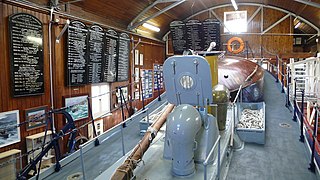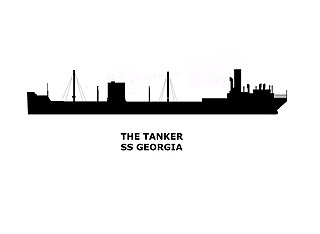| Date | Casualty | Lives saved |
|---|
| 1936 |
| 26 March | Steamship Boree of Caen, landed 7 from steamship Cadeuceus | |
| 2 April | Fishing boat Little Madge of Sheringham, in tow of lifeboat J C Madge of Sheringham
and fishing boats John Roberts and White Rose of Cromer, stood by boats | |
| 20 April | Barge Will Everard of London, stood by vessel | |
| 7–11 August | Steamship San Francisco of Le Havre, rendered assistance | |
| 16–18 November | Steamship Nesttun of Tvedestrand, rendered assistance | |
| 18 November | Steam drifter Pitagaveny of Banff, saved | 10 |
| 19 November | Steamship Yew Forest of Glasgow, took out a doctor | |
| 19 November | Steamship Lindisfarne of Newcastle on Tyne, rendered assistance | |
| 1937 |
| 9 November | Spritsail barge Hibernia of London | 3 |
| 1938 |
| 10 February | Fishing boat Urgent of Cromer, stood by boat | |
| May 30 | Fishing boat G V H of Great Yarmouth, saved boat | 2 |
| 7 August | Motor vessel John M of London, stood by vessel | |
| 2 November | Steamship Cantabria of Santander, saved | 5 |
| 27 December | Steamship Otto H of Pori, rendered assistance | |
| 1939 |
| 18 June | Rowing boat of Cromer, Landed 5 | |
| 9 October | Steamship Mount Ida of Piraeus, saved | 29 |
| 1 December | Steamship Realf of Moss, landed 32 and 10 naval ratings from Santa Gata | |
| 8 December | Steamship Corea [6] of Goole, saved | 7 |
| 12 December | Steamship Corbrook of London, stood by vessel | |
| 21 December | Motor vessel Dosinia of London, assisted to save vessel | 51 |
| 1940 |
| 9 January | Steamship Upminster of London, stood by vessel | |
| 11 January | Steamship Traviata of Genoa, landed 30 and saved | 1 |
| 11 January | HMT Holyrood, gave help | |
| 12 January | Light Vessel No 58, saved a ship's boat | 3 |
| 18 January | Steamship Asteria of Piraeus, saved | 11 |
| 18 January | Light Vessel No 58, saved a ship's boat | 4 |
| 30 January | Steam trawler Pelton of Grimsby, gave help | |
| 27 August | Aircraft, salvaged wreckage and gear | |
| 3 October | MV Actuosity of London, saved | 8 |
| 15 November | HMT Dungeness, saved | 11 |
| 25 November | HMT Dungeness, salvaged gear | |
| 7 December | Steamship Royston of Newcastle on Tyne, stood by | |
| 12 December | Steamship Royston of Newcastle on Tyne, gave help | |
| 1941 |
| 15 January | Steamship Lieutenant Robert Mory of Belfast, landed 19 and gave help | |
| 25 January | Steamship Meriones of Liverpool, saved | 101 |
| 8 March | Boat from steamship Corduff of London, saved | 13 |
| 8 March | Steamship Kenton of Newcastle, saved two boats | |
| 13 March | Steamship Essex Lance of London, gave help | |
| 14 March | Steamship Essex Lance of London, gave help | |
| 26 March | Steamship Kentwood of London, stood by | |
| 24 July | Aircraft, saved dinghy and picked up a body | |
| 6 August | (Convoy FS 559) Steamship Oxshott of London, saved | 16 |
| 6 August | (Convoy FS 559) Steamship SS Gallois of Rouen, saved | 31 |
| 6 August | (Convoy FS 559) Steamship Deerwood of London, saved | 19 |
| 6 August | (Convoy FS 559) Steamship Betty Hindley, saved | 22 |
| 15 September | Motor vessel Pontfield of Newcastle, gave help | |
| September 23 | Steamship J B Paddon of London, landed an injured man | |
| Between Sept 17 – 6 Nov | Steamship Teddington of London, gave help on 22 occasions | |
| 16 October | British aircraft, landed a body | |
| 26 October | Steamship English Trader of London, saved | 44 |
| 1942 |
| 29 January | Aeroplane dinghy seven miles north of Cley next the Sea, saved | 1 |
| 2 February | Motor vessel Sedulity of London, landed an injured man | |
| 15 March | HMS Vortigern, picked up 11 bodies after torpedo attack | |
| 11 April | British aeroplane, landed 6 | |
| 25 May | Yacht Betty of Gorleston, gave help | |
| 20 July | Aeroplane, gave help | |
| 18 November | Motor fishing boat Silver Queen of Lowestoft, saved vessel | 2 |
| 1943 |
| 12 March | Barrage balloon, salvaged balloon | |
| 26 July | Wellington Bomber aeroplane, saved | 5 |
| 1944 |
| 20 June | Aeroplane, salvaged wreckage | |
| 29 July | Aeroplane, salvaged gear | |
| 7–10 December | Steamship Samnethy of London, saved | |
| 1945 |
| 4 February | Motor vessel Valder of Hartlepool, gave help | |

















